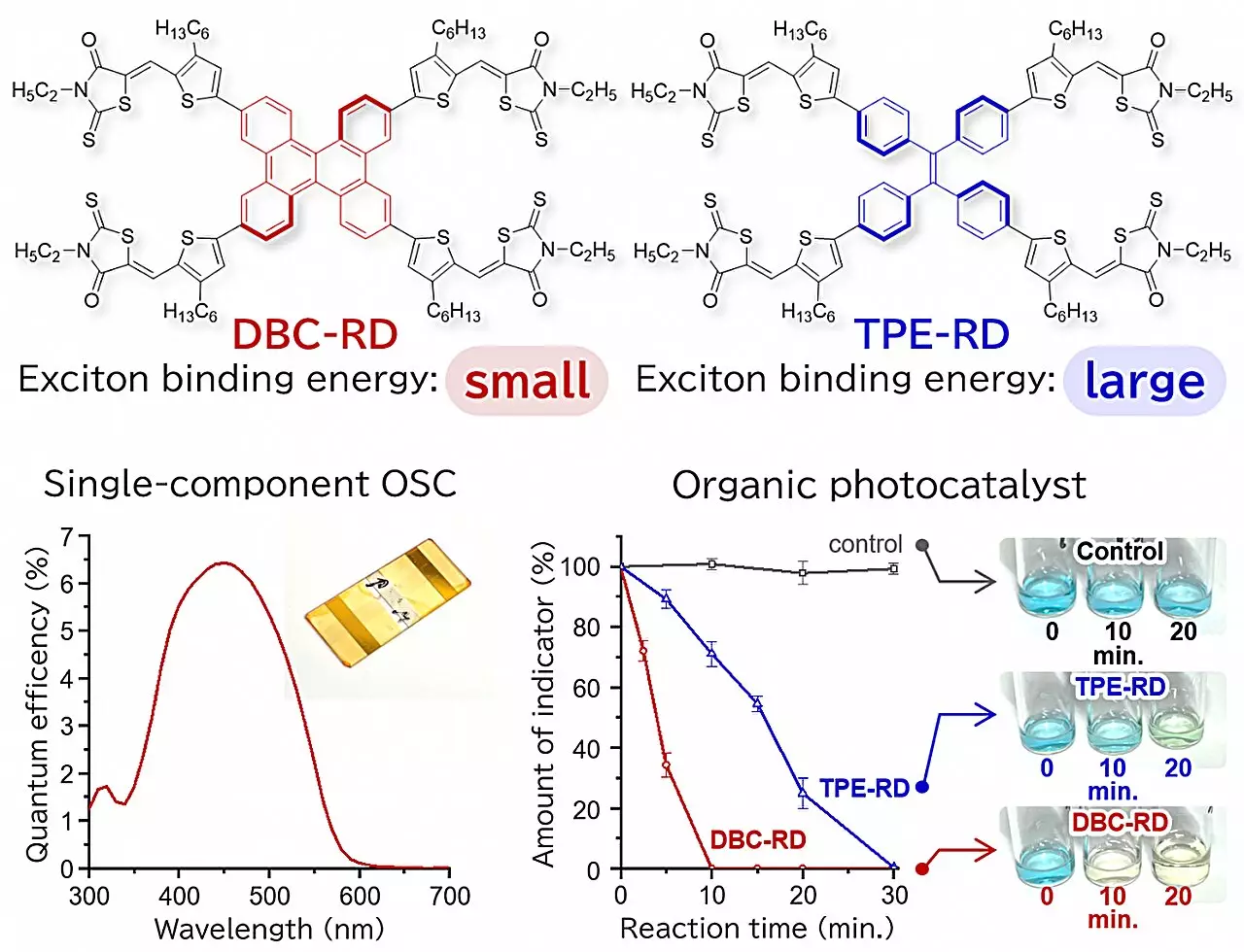The urgency of transitioning to renewable energy sources has never been more pronounced, with solar energy emerging as a frontrunner in the race against climate change. At the heart of this transformation are optoelectronic devices, primarily solar cells, which play a pivotal role in converting solar light into electricity. This article delves into a recent discovery by a research team at Osaka University that sheds light on enhancing the efficiency of organic solar cells by optimizing the arrangement of light-absorbing molecules—a breakthrough that could significantly uplift the solar energy landscape.
The Role of Molecular Structure in Device Efficiency
The efficiency of organic optoelectronic devices hinges on the interplay between light-absorbing organic molecules and their ability to convert absorbed light into free-charge carriers—essential elements for creating electric currents. Central to this process is a characteristic known as exciton-binding energy, which fundamentally influences how readily free-charge carriers are generated. A lower exciton-binding energy translates to improved performance; hence, the quest for designing molecules that excel in this regard is crucial.
The research led by Osaka University highlights an innovative pathway towards achieving lower exciton-binding energies, emphasizing the significance of molecular stacking—an aspect often overlooked in material design. By manipulating how these molecules aggregate, scientists can potentially enhance the efficiency of solar cells markedly.
In their study, the Osaka University team synthesized two variants of star-shaped molecules: one featuring a flexible center and the other exhibiting rigidity. While initial observations indicated similar behavior in solution, the true distinction arose when these molecules transitioned into a solid form. Rigid molecules displayed superior stacking capabilities, akin to neatly organized plates, whereas flexible counterparts struggled to align optimally.
This difference in molecular behavior has profound implications. The team discovered that the rigid molecules’ efficient stacking led to a substantial reduction in exciton-binding energy, thereby facilitating a heightened generation of free-charge carriers in the resultant devices. The culmination of this research produced not only an advanced single-component organic solar cell but also a photocatalyst, both of which demonstrated remarkable performance metrics.
The implications of these findings extend beyond mere academic curiosity; they signal a potential paradigm shift in the design and architecture of next-generation organic solar cells and other optoelectronic technologies. By prioritizing molecular aggregation in material synthesis, engineers and scientists can pave the way for more efficient energy conversion systems. This has the potential to not only bolster the performance of solar cells but also to make solar energy more accessible and efficient, ultimately contributing to a cleaner and greener future.
The advancements made by the Osaka University team illuminate the critical link between molecular structure and device performance, underscoring the importance of innovative approaches in renewable energy research. As the quest for efficient solar energy solutions progresses, understanding and harnessing the nuances of molecular interactions will undoubtedly play a pivotal role in shaping the landscape of clean energy technologies. The concept of optimizing molecular stacking introduces a promising frontier that might redefine how we approach the development of more effective optoelectronic devices, bringing us closer to sustainable energy solutions.


Leave a Reply